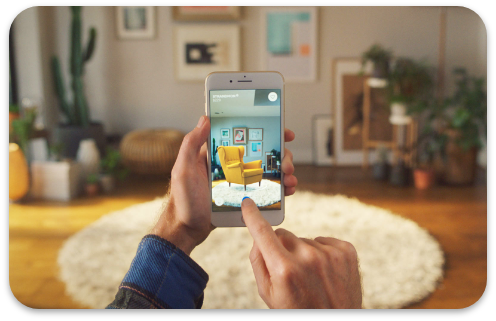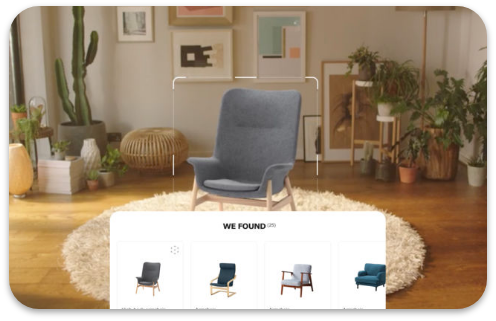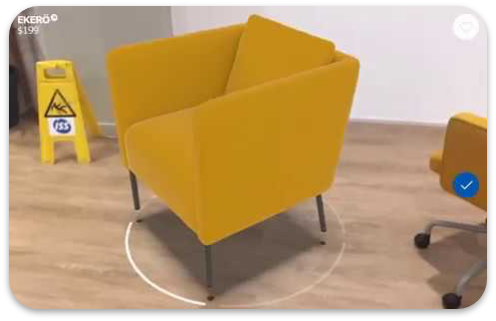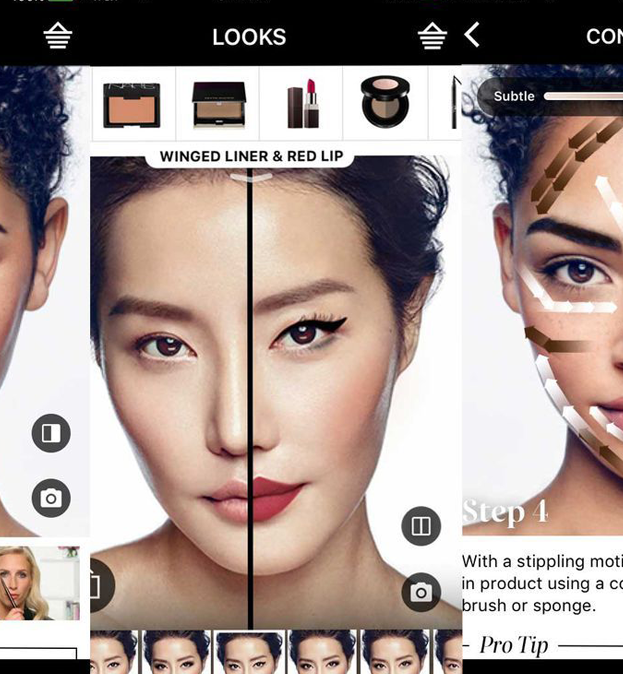The Future of eCommerce is in 3D
Imagine if before you make a purchase you could see in 3D how a piece of furniture would look in your home, or how a makeup product would look on you. Technology already exists to enable such an experience – and many major online retailers are rapidly adopting Augmented Reality (AR) into their marketing.


AR is not like virtual reality (VR), which creates a whole new environment regardless of the real world. Instead, AR overlays a 3D image of a product over your own, real-life environment. You’ve probably used AR already without realizing it: Snapchat’s AR filters let you enhance or change your face looks on your smartphone screen.
International retailers such IKEA, Sephora and Banana Flame have all used AR to increase their sales conversions. For example, IKEA customers can use the IKEA Place app to try out different pieces of furniture to see if they fit in the space they have in mind – both in terms of style and size
IKEA Place
IKEA Place is a good example of how AR can enable customers to make confident purchases, and provide them with an incentive to make the purchase. Once a customer visualizes the product in their environment, they’re more prone to buying it, as opposed to simply seeing an image of the product on their computer screen.



Sephora Visual Artist
Then there’s Sephora Virtual Artist, an AR-enabled mobile application that lets customers try out an exhaustive range of products on their own (virtual) face. The eShopper chooses different brands, shades and shapes, and applies them to their virtual lips, eyelids and cheeks, allowing them to compare different makeup looks to identify what suits them best, before ordering the products online. The mobile application also displays the makeup product that the customer tries, which allows them to keep track of their favorite products.


Banana Flame
An early example of effective use of AR in eCommerce was Banana Flame, which provided an in-store experience via their AR website. Customers would connect their webcam and try as many outfits as they wanted by picking outfits from the AR screen. The Banana Flame website would then place the item on top of the customer’s image to help them visualize how the outfit would look on them.
Lacoste
Despite these groundbreaking innovations, eMerchants have barely scratched the surface of AR’s eCommerce potential. Clearly, AR’s most obvious application is as a try-before-you-buy mechanism – like Lacoste’s LCST campaign, which quite literally put the shopping experience in the eShopper’s hands, allowing them to virtually try on a range of sneakers.
In this case, AR bridged the gap for customers who couldn’t visualize the products being showcased online. eMerchants who introduce AR for this purpose will create a more complete retail experience for their customers, increasing the amount of time those eShoppers spend on their platforms, retaining loyal customers and attracting new ones – leading to higher conversion rates, sales and profits.
Sources:
- “What’s the influence of augmented reality on the ecommerce industry?”, ITProPortal, Albert Smith, April 20, 2018 https://www.itproportal.com/features/whats-the-influence-of-augmented-reality-on-the-ecommerce-industry/
- “Augmented Reality in eCommerce”, Think Mobiles https://thinkmobiles.com/blog/augmented-reality-ecommerce/
- “Sephora’s latest app update lets you try virtual makeup on at home with AR”, The Verge, Ashley Carman, March 16, 2017 https://www.theverge.com/2017/3/16/14946086/sephora-virtual-assistant-ios-app-update-ar-makeup
-
“Augmented Reality, a Conversion Booster for eCommerce”, INKONIQ blog, October 14, 2016
https://medium.com/inkoniq-blog/augmented-reality-a-conversion-booster-for-ecommerce-d2d2840b5caa -
“Zugara Brings Webcam-Augmented Clothes Shopping to Life “, PC Mag, David Murphy, August 7, 2011
https://www.pcmag.com/article2/0,2817,2390593,00.asp -
https://techcrunch.com/2018/01/25/ubiquitous-ar-to-dominate-focused-vr-by-2022/


